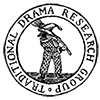Theatre historians habitually point to "folk-play echoes" in early dramatic works such as mysteries, moralities, interludes and stage-plays. When these are not purely verbal parallels, or vague archetypal fallings-and-risings, but concrete and recognisably similar sequences of action, such instances are undoubtedly significant for appreciation of the interaction of "traditional" with other early forms of English drama. Priority has been assigned to the folk play on the basis of its ritual origins, which counter the absence of documentation prior to the medieval and renaissance genres it is supposed to have influenced. With the collapse of the ritual origins theory this priority can no longer be assumed and in some cases it is likely that the direction of borrowing was the other way round, with traditional drama absorbing material, via jigs and drolls, from the early popular theatre. It is also likely that there existed a corpus of standard routines of "dramaturgical formulas", comprising both action and speech, common to many popular dramatic traditions, and analogous to the verbal formulas of traditional song. The familiar lazzi of the sixteenth century Italian commedia dell'arte may merely be one particular manifestation of the phenomenon. The English folk plays, within the framework of the seasonal house-visit mumming, comprise varying conglomerations of such formulas, sometimes, say through chapbook or antiquarian intervention, temporarily coalescing into fixed sequences.
[Ron Shuttleworth Collection holds audio tape recording, with transcript.]
